Table of Contents
The Austrian flag, also known as the flag of Austria, plays a prominent role in the nation’s history and culture, symbolizing Austrian identity and heritage. With its distinctive colors and meaningful symbolism, the flag stands as a strong symbol of unity and pride. In this article, we will explore the fascinating aspects of the Austrian flag, delving into its design, historical background, and the symbolism behind its elements.
The Austrian flag features three horizontal bands: two red bands surrounding a white band in the middle. The flag’s colors carry deep symbolic meaning for the Austrian people, reflecting the nation’s values, aspirations, and historical significance.
Austria Flag: Colors and Symbolism
- The Austrian flag is composed of three horizontal bands: two red bands at the top and bottom, with a white band in the center.
- The red bands represent the valor and bravery of the Austrian people, symbolizing the strength and resilience of the nation throughout its history.
- The white band in the center signifies peace and honesty, reflecting the purity of the nation’s intentions and its commitment to harmony.
Flag of Austria
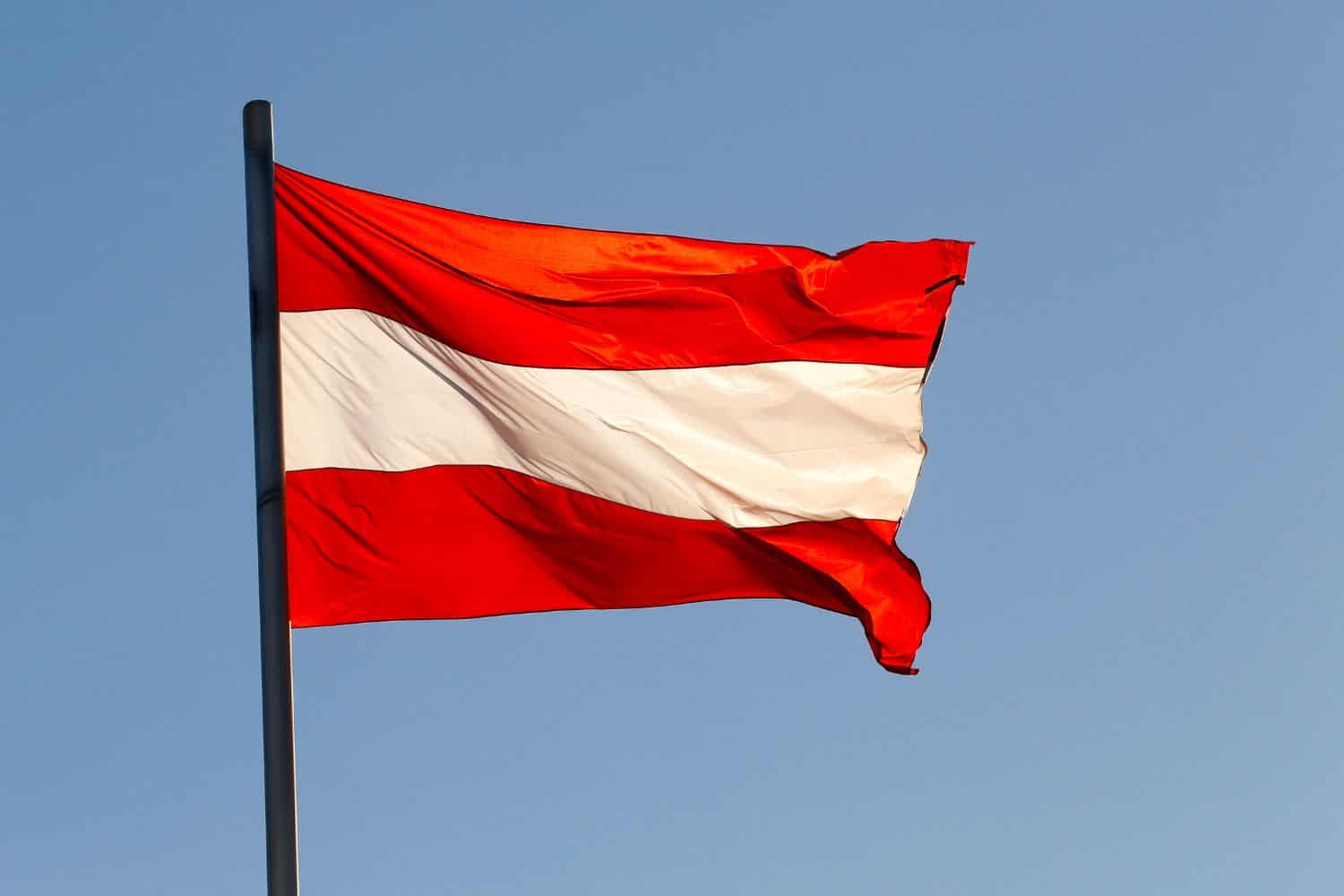
The Austrian flag features three horizontal bands: red, white, and red from top to bottom. The white band is sandwiched between the two red bands.
The red band at the top represents the courage and strength of the Austrian people. It symbolizes the valor and determination that have shaped Austria’s history and national identity.
The white band in the middle stands for purity, peace, and Austria’s desire for a harmonious and united society. It reflects the hope and aspiration of the Austrian people for a bright future.
The red band at the bottom complements the top red band, symbolizing the enduring strength and unity of the Austrian nation. Together, the two red bands signify Austria’s resilience and ability to overcome challenges.
The absence of additional symbols emphasizes Austria’s historical continuity and the timeless simplicity of the flag’s design, which has endured since its origins in medieval times. The flag reflects Austria’s rich cultural heritage and its aspiration to maintain peace and unity within the nation.
National Flag Etiquette and Protocol
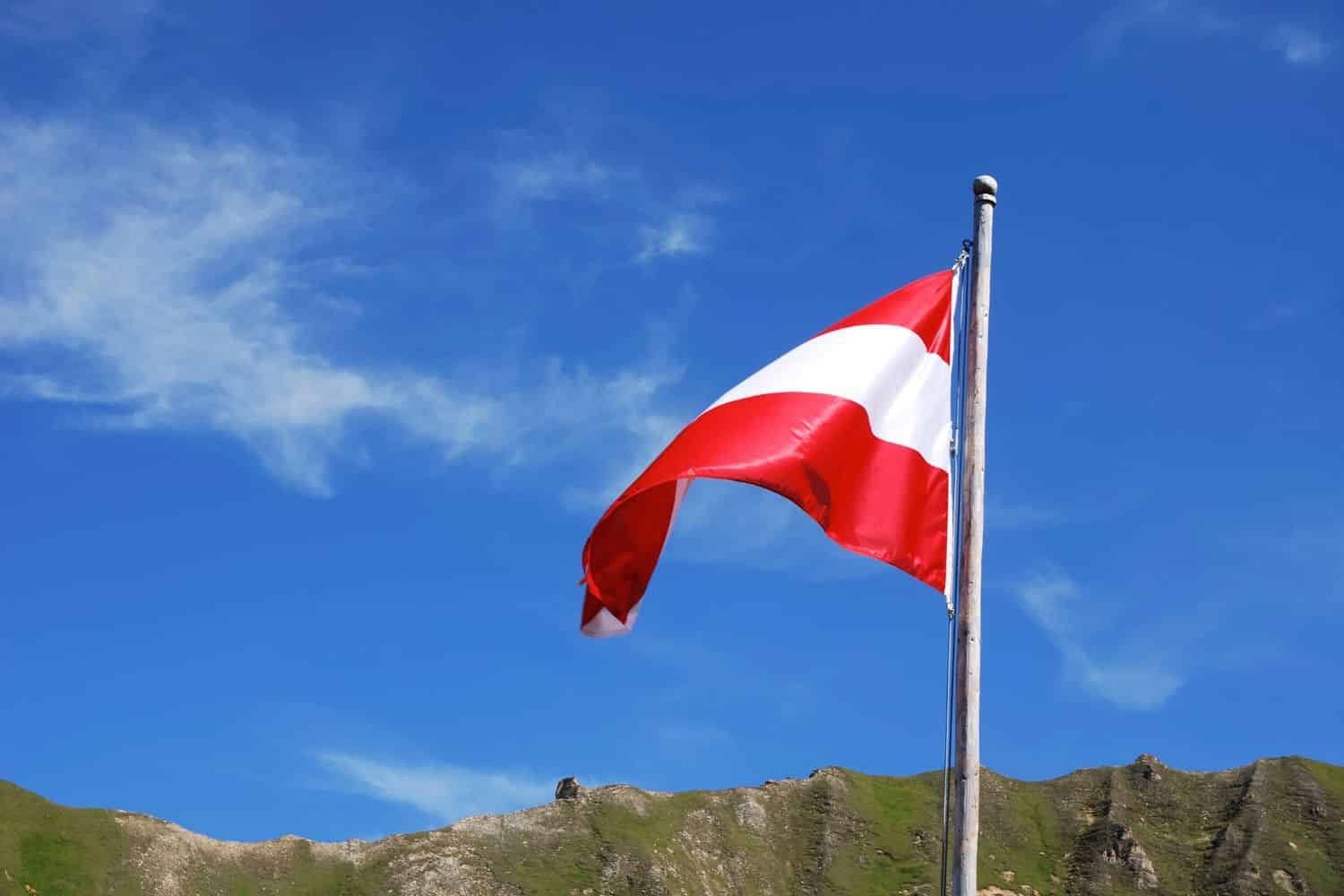
Respecting the proper usage and display of the Austrian flag is crucial. Understanding flag etiquette ensures it is shown with the respect it deserves, particularly during national events and ceremonies. Learn about the protocols for handling, hoisting, and lowering the flag, as well as the appropriate procedures for retiring or handling damaged flags.
- Proper Handling: Handle the Austrian flag with care and respect. Avoid letting it touch the ground or floor, and ensure it is held upright without dragging.
- Hoisting and Lowering: The flag should be hoisted briskly and lowered ceremoniously. It is customary to hoist the flag at sunrise and lower it at sunset, following specific guidelines or occasions.
- Displaying the Flag: When displaying the flag vertically, the top red band should be uppermost, with the white band in the middle and the lower red band at the bottom. The flag should be freely flown without obstruction or entanglement.
- Half-Staff: Lowering the flag to half-staff is a gesture of mourning or respect. This should be done on days of remembrance or as directed by authorities to honor national tragedies or the passing of notable figures.
- Flag Retirement: When a flag becomes damaged or worn out, retire it respectfully. Follow appropriate guidelines and local regulations, which may include burning it in a respectful ceremony.
- Flag Size and Placement: The flag size should be proportionate to the flagpole or display area. Consult local guidelines for specific rules on flag size and placement.
- Respectful Disposal: If burning is not an option, the flag should be disposed of respectfully. Consider burying it or handing it over to an authorized organization that specializes in flag disposal.
Interesting Facts and Trivia
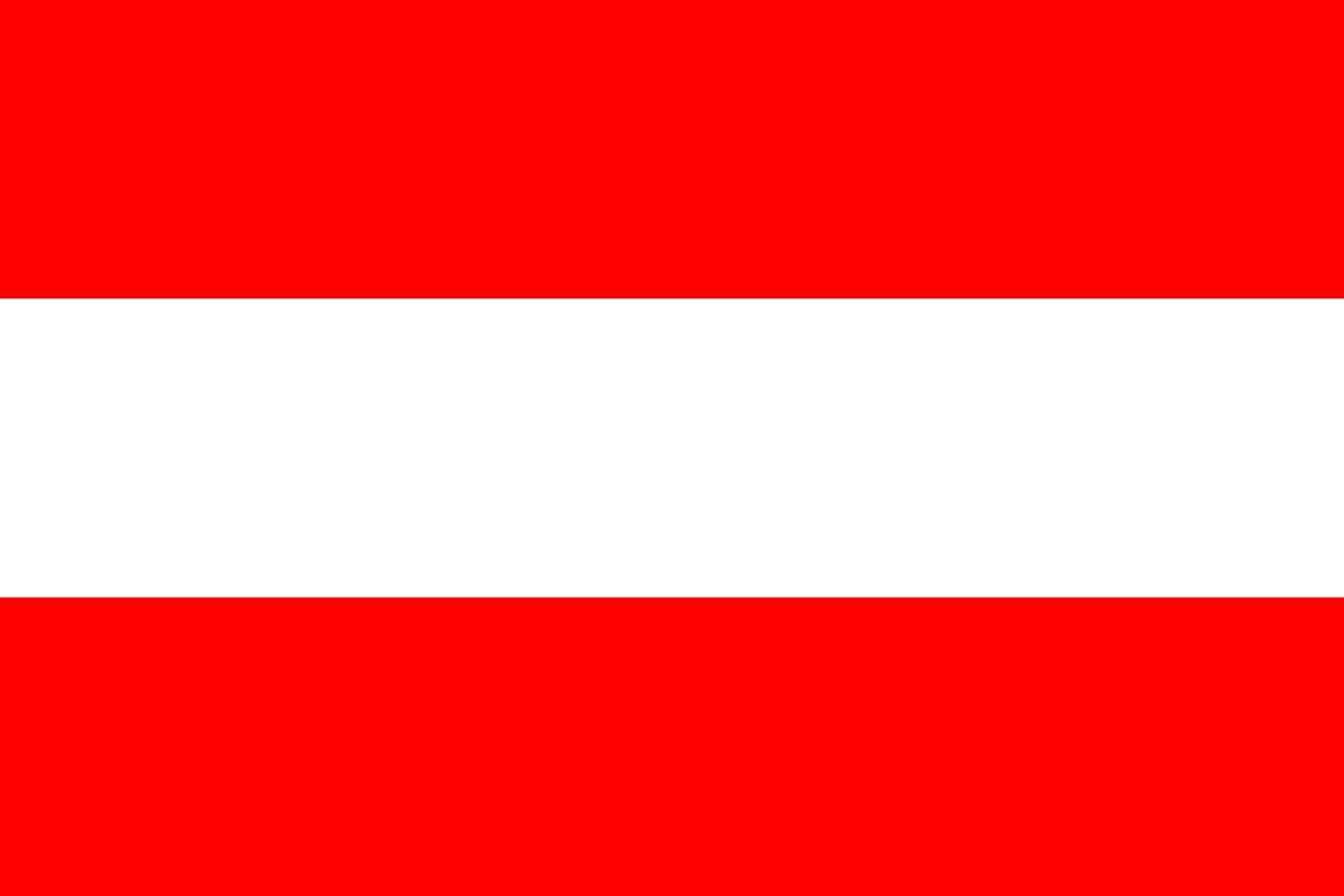
Embark on a journey through fascinating facts and trivia about the Austrian flag. Discover the hidden symbolism within the flag’s design and uncover stories of notable incidents that have left an indelible mark on Austria’s history and identity.
Rich Tapestry of History
- 1230s: The origins of the Austrian flag date back to the Babenberg dynasty. It is believed that the red-white-red design was created by Duke Leopold V after a battle, where his white tunic was stained with blood except for the strip that remained under his belt. This tale became a symbol of strength and perseverance.
- 1804-1867: During the Austrian Empire era, a different flag was used, reflecting the monarchical rule and representing the Habsburg dynasty’s vast empire.
- 1867-1918: With the establishment of the Austro-Hungarian Empire, the Austrian flag became one of the many symbols within the dual monarchy.
- 1918: After World War I and the fall of the Austro-Hungarian Empire, Austria re-established the red-white-red flag as a symbol of the newly founded Republic of Austria.
- 1938-1945: During the Nazi annexation of Austria (Anschluss), the Austrian flag was replaced by the Nazi German flag.
- 1945: After World War II, the original red-white-red design was reinstated as the national flag.
These historical facts reveal the profound journey of the Austrian flag, from its medieval origins to the present day. Its symbolism reflects Austria’s enduring national identity and the resilience of its people.
Flag-Related Symbols and Emblems
A flag is just one representation of a nation’s identity. Discover additional national symbols and emblems associated with Austria to deepen your understanding of its heritage and cultural roots.
Symbolism of the Austrian Flag
The Austrian flag encapsulates various symbolic elements representing the nation’s history, values, and aspirations. Below are the symbolisms of the Austrian flag delineated:
- Red Color: Reflects the valor, sacrifices, and bravery of the Austrian people throughout their history, particularly in their pursuit of independence and sovereignty.
- White Color: Symbolizes peace, purity, and the bright prospects that lie ahead for Austria, embodying the nation’s hopes and dreams.
- Red-White-Red Pattern: Represents Austria’s historical legacy, signifying its enduring struggle against adversity and its journey towards progress and prosperity.
- Historical Legacy: The flag symbolizes Austria’s rich historical narrative, encompassing its battles for autonomy, resistance against external influences, and its cultural contributions to Europe and the world.
- National Identity: Serving as a unifying emblem, the flag fosters a shared sense of Austrian identity among its citizens, emphasizing their common heritage and values.
- National Aspirations: Through its design and colors, the flag embodies Austria’s aspirations for freedom, unity, and prosperity, encapsulating the nation’s collective ideals and ambitions.
These symbolisms embedded within the flag bolster Austria’s national pride and identity, echoing its historical trajectory and cultural significance.
Flags of Similar Countries or Regions
Exploring the flags of neighboring countries and regions around Austria provides a fascinating comparative perspective. Let’s compare and contrast the Austrian flag with those of neighboring nations, highlighting historical and cultural connections while revealing unique identities.
Austrian Flag vs German Flag
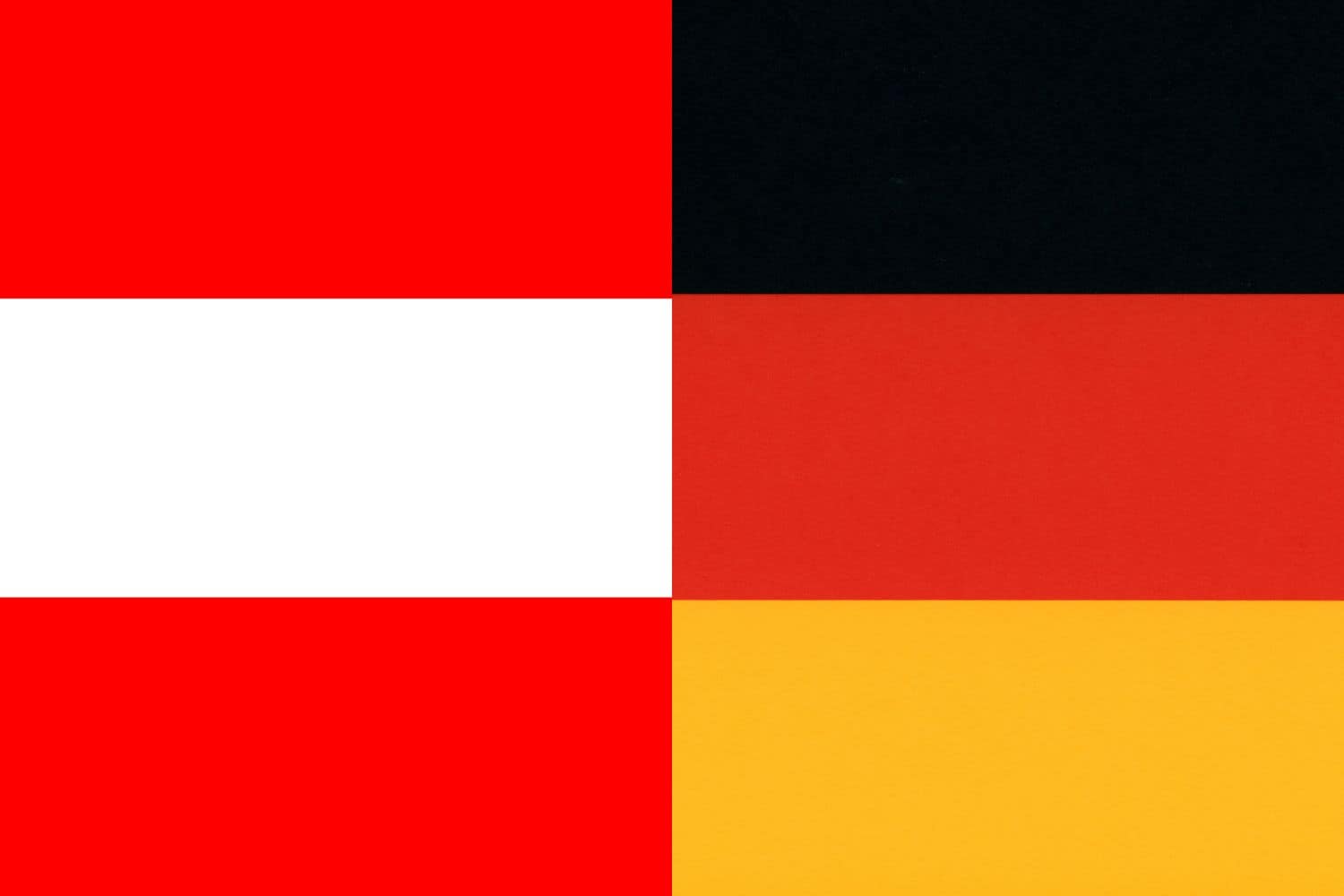
Similarity: Both flags feature the color black, which symbolizes strength and power.
Difference: The German flag has horizontal stripes in black, red, and gold, representing unity and freedom. In contrast, the Austrian flag displays only red and white horizontal stripes.
Austrian Flag vs Swiss Flag
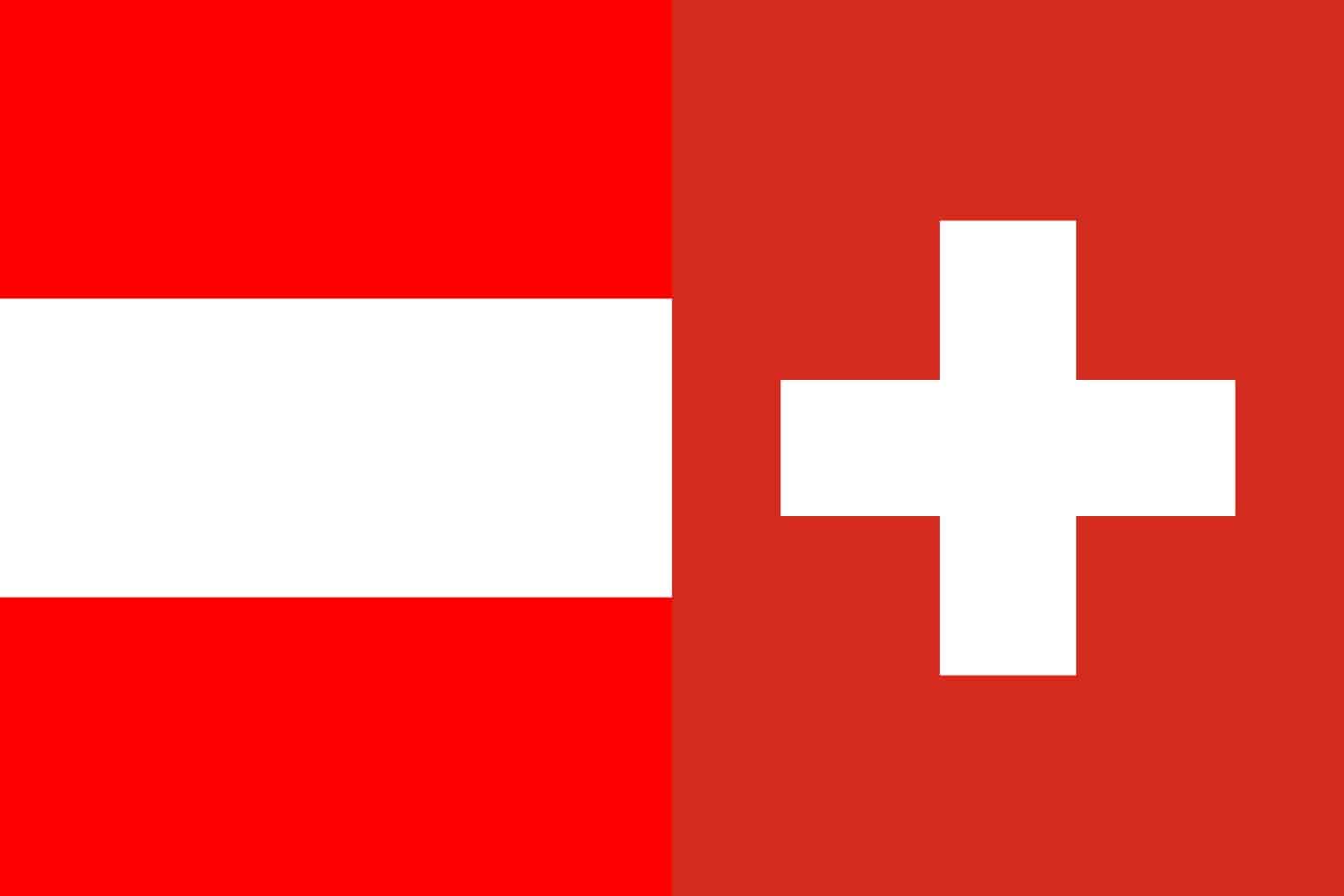
Similarity: Both flags feature red as a prominent color, representing courage and strength.
Difference: The Swiss flag is square-shaped and includes a white cross in the center on a red field. Austria’s flag is rectangular and consists of three horizontal stripes: red, white, and red.
Austrian Flag vs Hungarian Flag

Similarity: Both flags incorporate the color scheme of red and white in horizontal stripes.
Difference: The Hungarian flag features red, white, and green horizontal stripes representing strength, fidelity, and hope. Austria’s flag lacks the green stripe and only has red and white stripes.
Austrian Flag vs Slovenian Flag
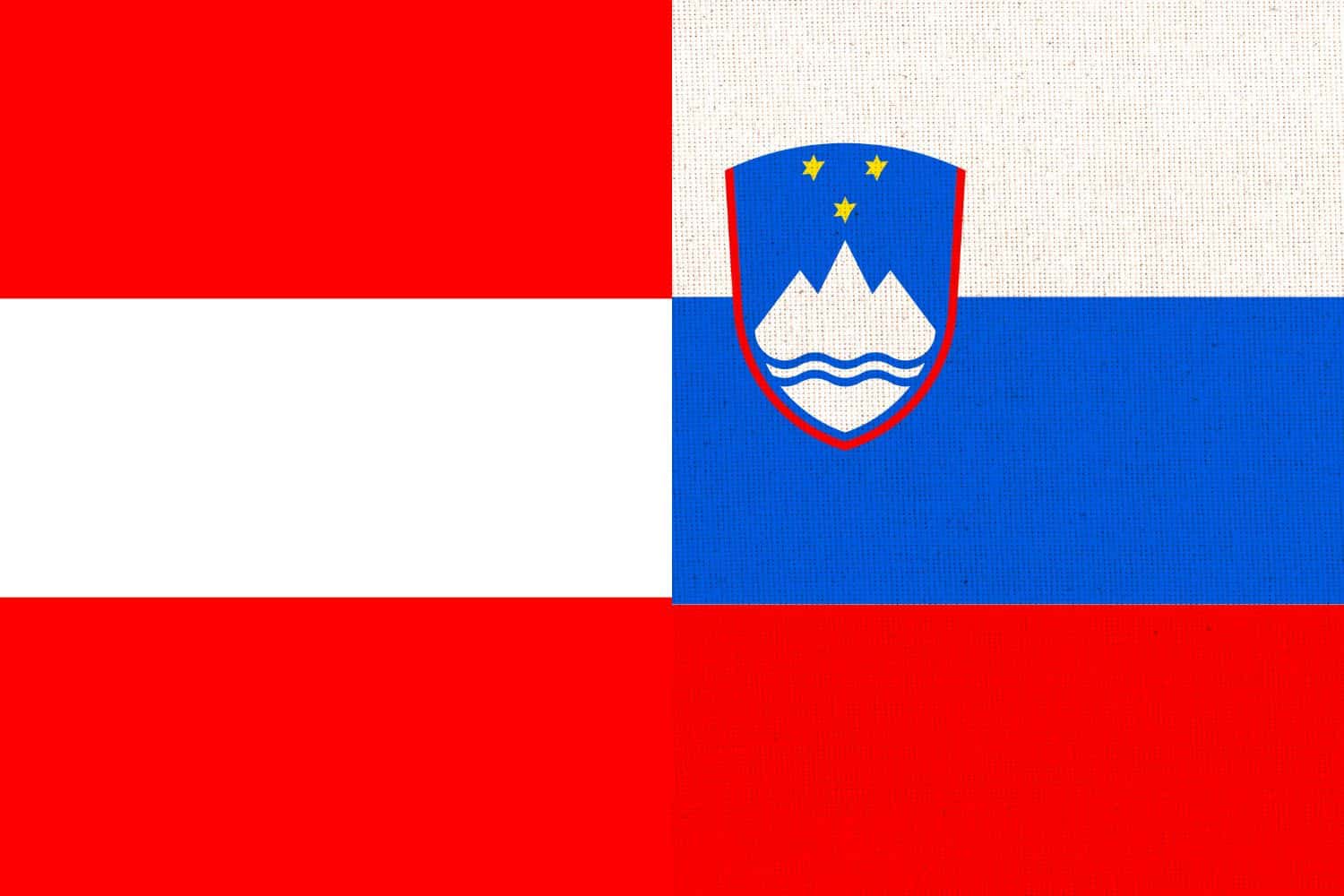
Similarity: Both flags feature the pan-Slavic colors of red, white, and blue.
Difference: The Slovenian flag includes the national coat of arms, showcasing Mount Triglav, three stars, and the Adriatic Sea. Austria’s flag does not include any symbols or emblems.
Austrian Flag vs Italian Flag
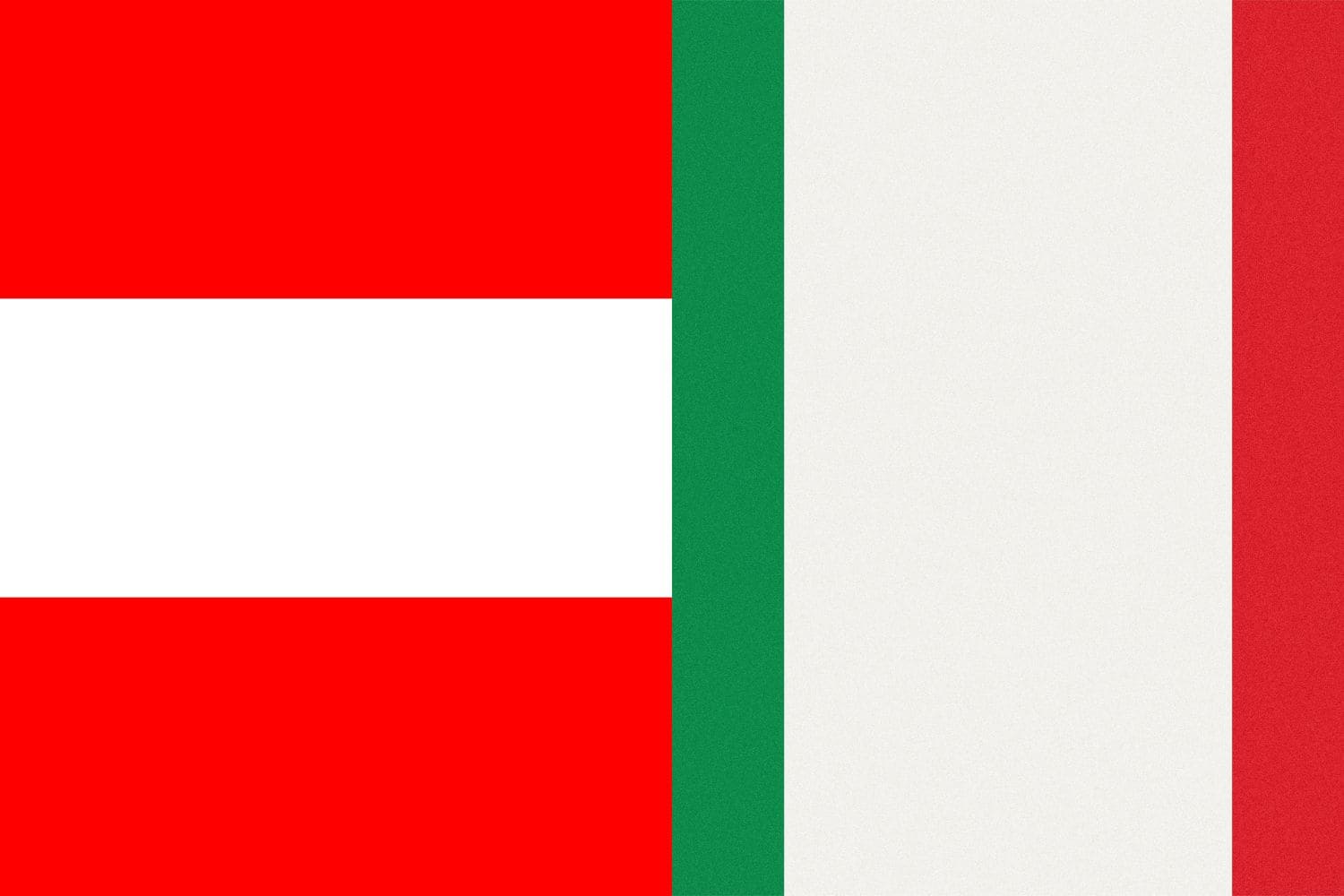
Similarity: Both flags include the color red, symbolizing courage.
Difference: The Italian flag is a tricolor with vertical stripes in green, white, and red, representing hope, faith, and charity. Austria’s flag has only horizontal stripes of red and white.
Frequently Asked Questions (FAQs)
Explore responses to frequently asked questions concerning the Austria flag picture. Delve into its historical background and the symbolism embedded within its elements. Discover succinct and enlightening answers that cater to the curiosity surrounding Austria’s flag.
Why is the Austrian flag red and white?
The red-white-red design is believed to originate from Duke Leopold V’s tunic, which was stained with blood during a battle, leaving a white band where his belt was fastened.
What does the Austrian flag symbolize?
The flag symbolizes Austria’s national unity, strength, and peaceful aspirations.
When was the Austrian flag first adopted?
The current form of the Austrian flag dates back to the 13th century, making it one of the world’s oldest national flags still in use.
What is the historical origin of the Austrian flag?
The Austrian flag’s origins trace back to the Babenberg dynasty in the 13th century, making it one of the world’s oldest national flags. The red-white-red design is believed to have originated with Duke Leopold V after the Siege of Acre.
Is the Austrian flag used in other official capacities?
Yes, the Austrian flag is used in state ceremonies, on government buildings, and in diplomatic missions abroad. The civil flag (red-white-red without the coat of arms) is used by citizens for general purposes.
Why doesn’t the Austrian flag feature any symbols or emblems?
The simplicity of the flag reflects the historical continuity of Austria’s national identity. While Austria has a coat of arms featuring an eagle, this emblem is not included on the national flag to maintain its traditional design.
How does the Austrian flag reflect the nation’s cultural values?
The red-white-red flag symbolizes Austria’s values of unity, strength, and peace. Its design reflects the enduring spirit of the Austrian people, their resilience, and their shared cultural heritage.
Are there specific rules for flying the Austrian flag?
Yes, the flag should be hoisted briskly and lowered slowly in ceremonies. During mourning or national tragedies, it is flown at half-staff. It must not touch the ground or be used for commercial purposes that could demean its value.
